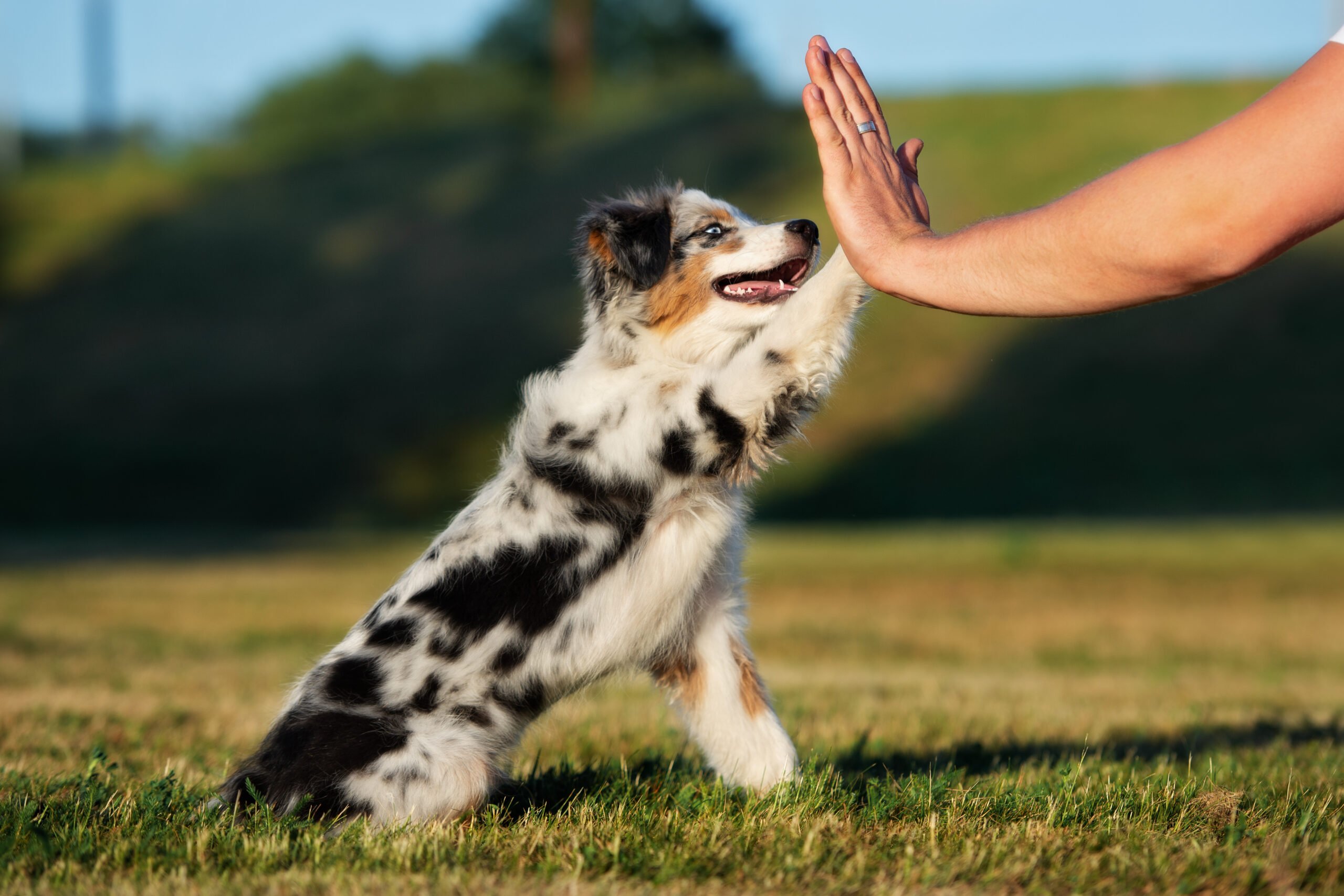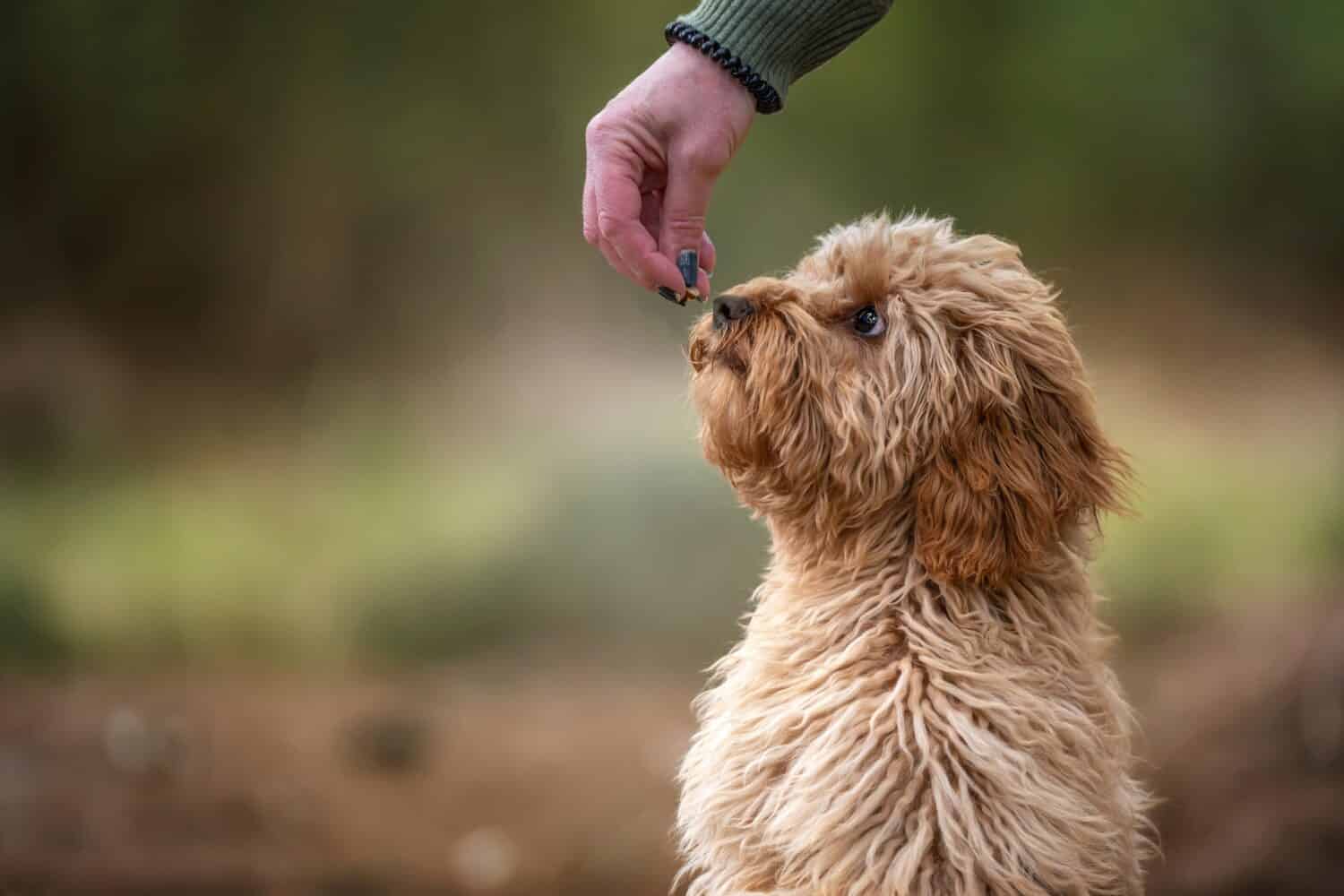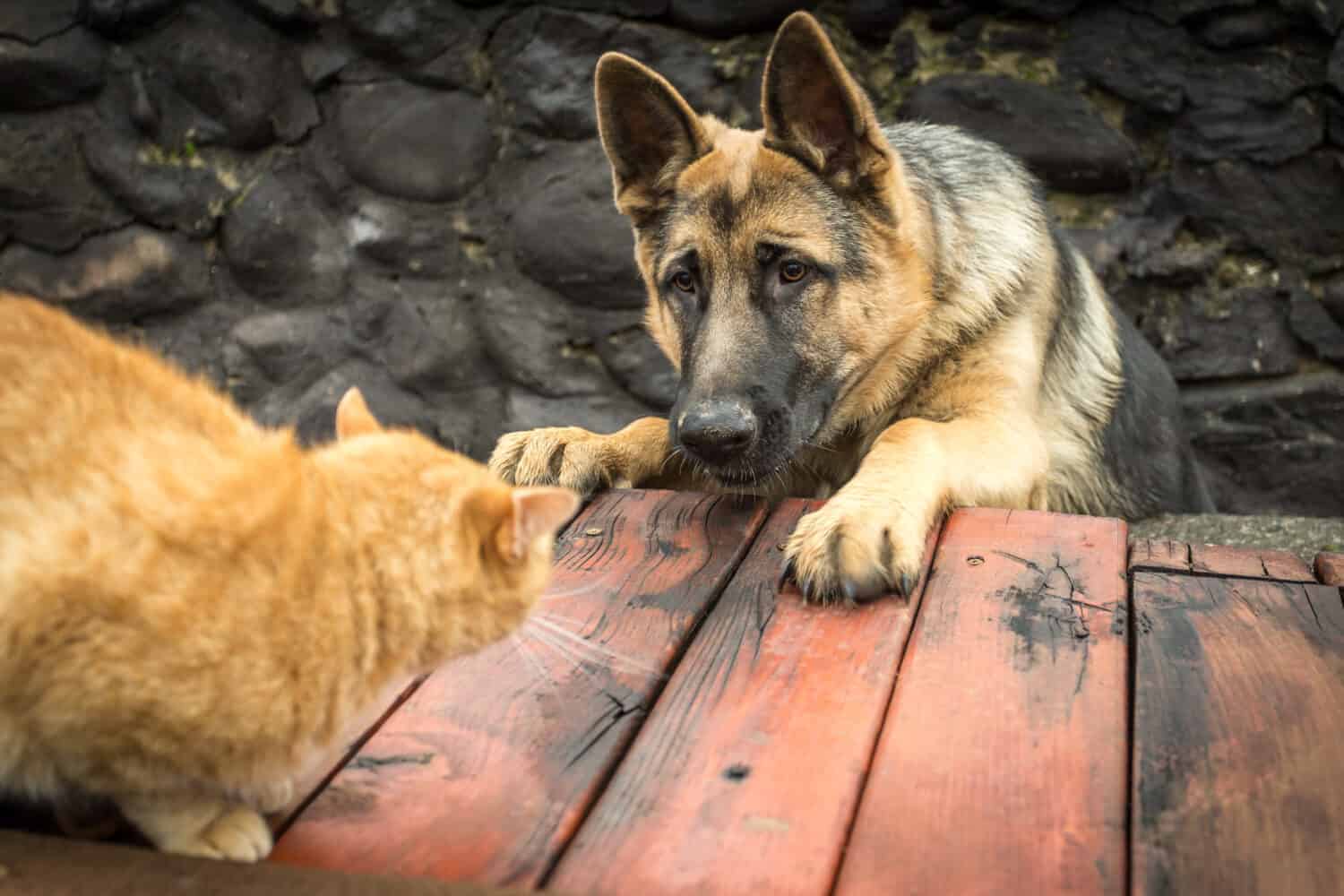Are you bringing home a new family pet? Introducing a new dog or cat into your home can be quite stressful. We should handle the introduction process carefully and thoughtfully to ensure that both animals settle into their new home calmly. Introductions between dogs and cats won’t all be the same. Their reactions will depend on their age, gender, which breed is the newcomer, and many other reasons. Some dogs and cats are friendlier than others and will happily accept a new companion. Let’s take a look at some effective tips for introducing your dog and cat and which breeds get along together.
Train Your Dog Before Getting a Cat

©otsphoto/Shutterstock.com
Before getting a cat, it is important to teach your dog the basic commands:
- Sit
- Stay
- Down
- Come
If your dog doesn’t know these commands, start teaching them now using treat-based training. This way, when the cat arrives, the dog will be looking forward to the reward for good behavior instead of worrying about the cat.
Prepare Your Home

©Followtheflow/Shutterstock.com
It’s important to prepare your home before bringing your new dog or cat home. Remove any breakable items and ensure that any loose wires or cords are out of the way. In addition, if you are bringing a new dog home, make sure the yard is safe and there are no gaps in the fence for it to escape. Dogs and cats need time to adjust to their new companions and environment. To prevent fear and aggression, this face-to-face meeting needs to be comfortable and slow. This is why it is best to learn some helpful tips for introducing your dog and cat.
Pre-Introduction

©ilona.shorokhova/Shutterstock.com
Before the introduction, you can begin by helping both pets become familiar with each other’s scent. Take your dog’s blanket or toy and swap it with the cat’s blanket or toy. This will help ease the nervousness and create a familiar sense before they meet face-to-face.
The Cat Needs Its Own Room

©New Africa/Shutterstock.com
Whether it’s a resident or a newcomer, it is important for the cat to have its own dog-free room. The room can be any size; however, it should have a ceiling and a door. The room should include a water bowl, a food bowl, a litter box, a comfortable bed, a scratching post, and toys. To make the cat feel safer, you could set up some tunnels and hiding places. Amazon has a variety of cat tunnels with play toys starting at $9. However, if you’re handy at DIY, you could make it a fun family project with the kids.
Additionally, when it comes to meal time, feed each pet on either side of the door so they can smell each other’s scent while enjoying their food. However, don’t push the food too close to the door, as you don’t want them to start fighting. Slowly start moving their dishes closer to the door each day until they can eat peacefully directly on either side of the door. You can continue this process throughout the introduction.
Keep Them Separated for 3-4 Days

©Dani Simmonds/Shutterstock.com
Make sure that your new pet has visited the vet, is clear of any illness, and is healthy. For example, if any of them have been spayed or neutered and are still recovering, Keep your new pet in a separate room for 3–4 days before doing the face-to-face introduction. This way, they can get used to each other’s presence by smelling and hearing each other, even though they can’t see each other.
Swop Living Quarters

©Peruphotart/Shutterstock.com
If your cat uses its litter box properly and eats well after a few days, let them roam the house for a bit. Then, while your cat enjoys some fresh air, have your dog explore its room. This allows your cat to feel comfortable in your home without fearing other animals while still picking up on their scent.
Introducing Dogs to Cats

©Standret/Shutterstock.com
Rules are slightly different when your resident animal is a dog and you want to welcome a cat to your family. Some dog breeds can easily injure or kill a cat; if the feline is coming onto their turf, they might respond aggressively. Dogs with a high prey drive should always be carefully monitored around cats, as their natural instincts could kick in. In addition, some dogs like to chase cats playfully, but cats might see this as an attack and act aggressively by hissing or scratching. So, introducing cats to dogs is not as simple as it may seem, which is why these steps are so essential.
Set Up a Controlled Meeting

©Sarah Verheul/Shutterstock.com
After the first phase of the introduction, on the opposite side of the door, you can set up a controlled face-to-face meeting.
Before entering the space, you should put a leash on your dog. First, ensure you have lots of treats and use them to get your pooch to sit or lie down. Next, have someone else bring in the cat and let them sit on the opposite end of the room. They should try to keep it in the same vicinity. To keep them close, put down some food or catnip.
Don’t prolong these meetings; frequent short visits daily are better than dragged-out meetings where the dog could become too excited or uncontrollable. Repeat these meetings until both animals show no signs of fear, aggression, or unacceptable behavior.
Prevent Aggressive Encounters and Fearful Encounters

©fantom_rd/Shutterstock.com
Should either pet feel fearful or become aggressive during an introduction, stop the interaction and try again at a later stage. If you allow this behavior to happen often or intensify, it will be hard to change. While it’s natural for mild forms of fear and aggression to creep in, you don’t want it to take over the moment. The best way to avoid this behavior entirely is by gradually introducing your pets through the door.
Take Precaution

©Photobox.ks/Shutterstock.com
Furthermore, ensure that you don’t disrupt your resident pet’s schedule before the meeting so they feel comfortable and happy. In addition, there must always be a hiding place present for your cat.
Once everyone is together, if a fight breaks out, don’t use your hands to break it up. Instead, have a hosepipe or spray bottle nearby and wet them as much as possible. Should they fight, take a break, and try again later. Instead, stick to the scent-based stage of the introduction before trying again.
Set the Cat Free

©Andrey Sayfutdinov/Shutterstock.com
Unfortunately, your dog still needs to be on a leash for this step; however, give your cat free rein to explore. Keep your dog in the “down-stay” position and feed it treats while praising it for their superb behavior and obeying your command. If the cat responds negatively or becomes aggressive, the process is moving too fast for them, and you need to go back to the previous step.
Continue Using Positive Reinforcement

©chrisukphoto/Shutterstock.com
While dogs need to learn that getting excited and chasing or playing rough with your cat is wrong, they must first learn how to act the right way. If you discipline your dog every time the cat is around, it may come to associate the cat with negative emotions and may even become hostile towards it. In addition, they must realize that when they do something right, they get a treat, praise, or both.
Always Monitor Early Communication Between Dogs and Cats

©Mike2479/Shutterstock.com
While your dog and cat might get along well when you’re around, it could be a different story when you’re not around. During the early phase of this new living arrangement, monitor their interaction. Always make sure that there is an escape route for your cat. Additionally, you can separate them before you leave to go out.
When You Should Ask for Help

©bmf-foto.de/Shutterstock.com
If your dog and cat are still not comfortable after a few weeks, it could be time to seek professional help. Continuing on your own may result in more fights that could cause severe injury to either your pets or yourself. Instead, to get the assistance you and your pets need, contact an animal trainer to help you.
Extra Tips for Introducing Your Dog and Cat

©Oleg Opryshko/Shutterstock.com
- Dogs love cat food, so while introducing these two, to avoid aggression, ensure all food is always put away.
- Dogs enjoy eating cat poop, and while this is not dangerous, it might be unpleasant to you. However, it also stresses your cat out, like their privacy has been invaded.
- Placing the litter box on top of or in a tall cupboard can help avoid this problem.
Dog Breeds That Do Well With Cats

©Chalabala/iStock via Getty Images
Some dog breeds are known to be more compatible with new cats and can live together peacefully with them. In addition, some dogs have natural hunting and herding skills, and having a cat running around could trigger their natural instinct to attack. However, when introduced as puppies or kittens, most breeds can get along well. These 10 dog breeds do well with cats.
- Beagles
- Cavalier King Charles Spaniels
- Golden Retrievers
- Labrador Retrievers
- Pugs
- Bull Dogs
- Papillons
- Collie
- Basset Hound
- Bichon Frise
Cat Breeds That Do Well With Dogs

©Gladskikh Tatiana/Shutterstock.com
Certain breeds of cats are more compatible with dogs. However, it is best to introduce both pets while they are still young. These 10 cat breeds do well with dogs.
- Birman
- Bombay
- British Shorthair
- Norwegian Forest Cat
- Maine Coon
- Japanese Bobtail
- Abyssinian
- Ragdoll
- Tonkinese
- Siberian Cat
The image featured at the top of this post is ©Ermolaev Alexander/Shutterstock.com.
